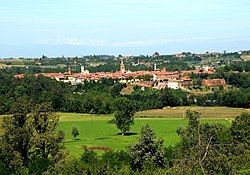Origins
This surname arrived in today's Republic of Colombia, in the 18th century, after the arrival of the Genoese Giovanni Andrea Botero Bernavi (Juan Andrés, in Spanish) from Cádiz, Spain to the city of Cartagena de Indias, Viceroyalty of New Granada around the year 1715, who worked in the service of the Spanish Crown as naval gunner of the Santa Rosa ship, [5] built in the Republic of Genoa for King Philip V of Bourbon. [6] [7]
The main purpose of this trip was to take to present-day Peru, along with his companions, the Prince of Santo Buono, newly appointed Viceroy of Peru, Carmine Nicolau Caracciol, who suffered a family calamity after the death on board of his wife, when giving birth. [8]
Among other factors, that event caused the boat to make a stop in Cartagena, where due to illness, Botero had to give up continuing his trip to Peru. Not being a Spanish citizen, he had to request a special permit from the Real Audiencia to be able to settle in the territory of the Viceroyalty of New Granada.
Botero travelled from the Caribbean coast to the interior of the territory, settling in the San Nicolás Valley, Rionegro, Antioquia, where he dedicated himself to gold mining. Right there, he married Doña Antonia Mejía Somoano, on June 26, 1719, thus founding the Botero family in Colombia, a country where this surname has the largest number of descendants at the present time. [9] [10]
Current times
Nowadays, the members of the Botero family in Colombia, all descendants of the Italian Giovanni Andrea Botero and the Spaniard Antonia Mejía, are located in various areas and municipalities of the country, with a predominant presence in the city of Medellín, some towns in Antioquia such as Sonsón, [11] La Ceja, La Unión [3] and Abejorral, the main Colombian coffee growing region including the cities of Armenia, Pereira and Manizales and in other areas, such as the cities of Bogotá and Cali.
One of its best-known members is the artist Fernando Botero Angulo, born in the city of Medellín, a character recognized in many countries around the world for his paintings, sculptures and artistic drawings, which have been exhibited in large cities of various continents. [12]
Fernando Botero has residences in the cities of New York, Paris and also in the municipality of Pietrasanta, region of Tuscany, Italy, a town where artworks of his authorship are exhibited.
Among women, one of the most notable people is the actress and presenter María Cecilia Botero, who has been recognized as one of the great artists and symbols of television in Colombia for decades. [13] In 2021, she participated as the Spanish voice of the grandmother Alma Madrigal in the Disney animated film, Encanto . [14]

